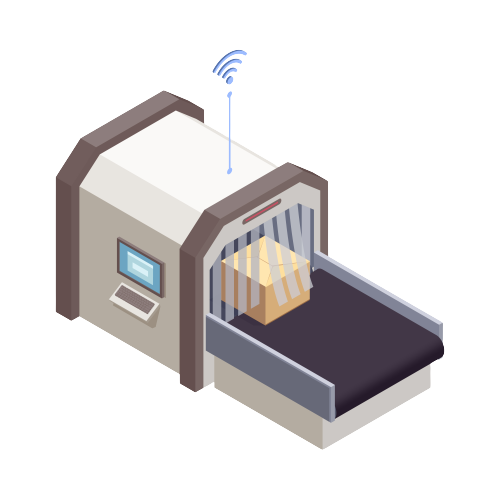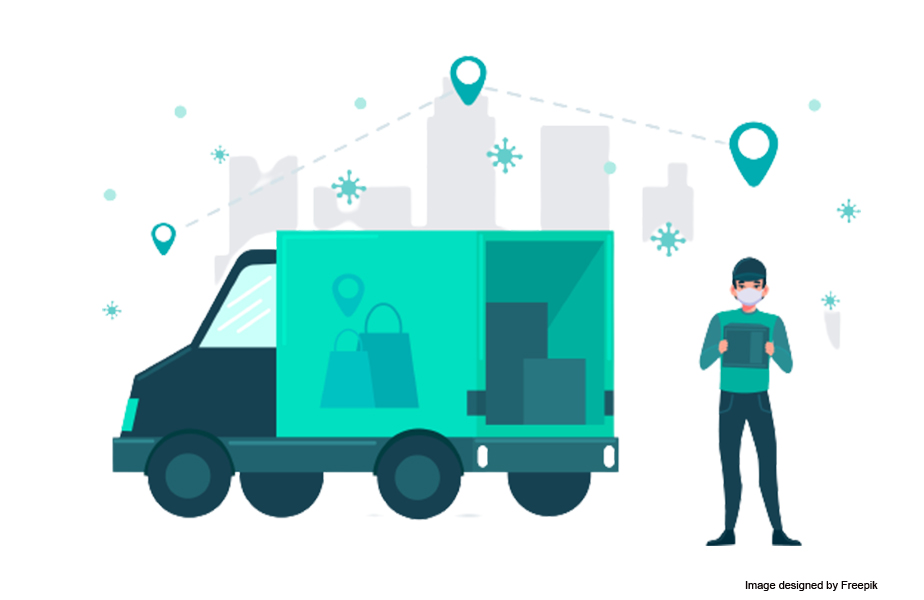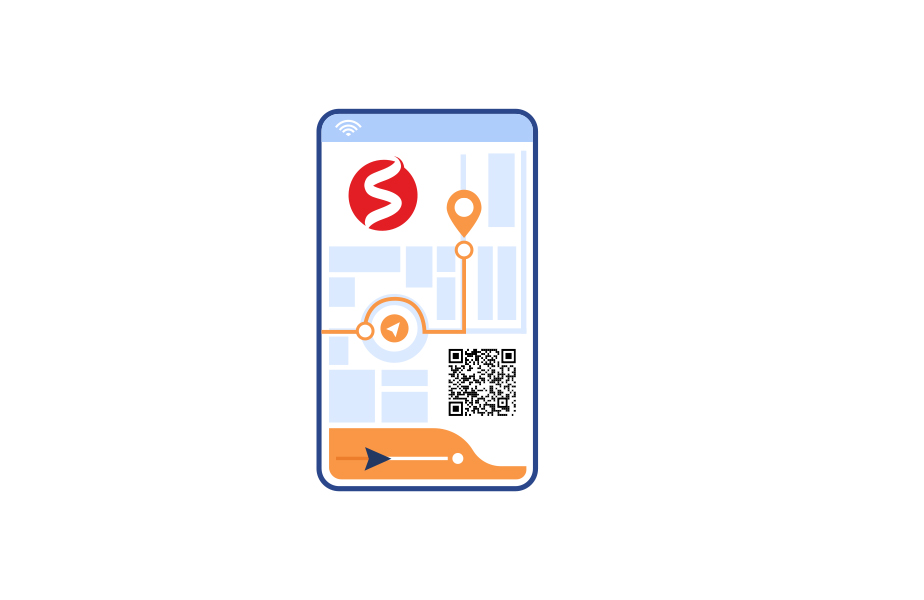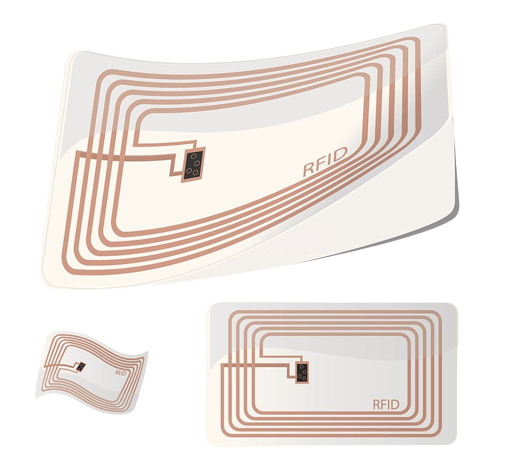RFID SOLUTIONS
RFID (Radio Frequency Identification) technology can help to resolve the manpower shortage by increasing efficiency and reducing the need for human labor in certain tasks. Here are a few examples of how RFID/IoT can help:
- Automation in warehouses and factories
- Supply Chain Management
- Inventory Management
- Time and Attendance
- Asset Tracking
RFID has a long history of use cases in various industries especially now with the convergence with Internet-of-Things as it’s known now; IoT. The huge demand for automation and un-manned technologies incorporating Artificial Intelligence: AI across every industry is pervasive now. Some of the growing trends in RFID & IoT are detailed out here:

High Speed-Reading Chamber
RFID Tracking Chamber is a customized enclosure that is designed to shield RFID signals from interference and to enhance the performance of RFID systems. RFID chambers can be used to protect RFID tags, readers, and antennas from external electromagnetic interference (EMI) and radio frequency interference (RFI). They can be custom-made to fit specific sizes, shapes, and RFID frequencies.
RFID chambers can be made of different materials, such as aluminium, steel, or copper, and can be coated with a conductive paint or a metallic film to create a Faraday cage-like effect. The chamber can be equipped with RF-transparent windows or ports to allow for the passage of RFID signals.
Custom-made RFID chambers that can be used in a variety of applications, such as:
- High speed tracking of parts in fast moving environment
- Parts Audit, Testing, and certification of parts
- Shielding of RFID signals in clean room medical environments to prevent interference with medical equipment,
- Shielding RFID signals in industrial environments to prevent interference with equipment and machinery.
RFID Conveyor Systems Receiving, Sorting, Put away
High volume and intelligent Conveyor Systems at the various retail, warehouse, production and operation processes increases accuracy and capacity of your operation.
It is a technology that allows organizations to automate repetitive, manual tasks and processes by creating systems to perform these tasks. RFID & IoT can automate tasks across a variety of industries and applications, including customer service, finance and accounting, human resources, and more. The goal of these systems is to reduce the time and effort required to perform repetitive tasks, increase accuracy, and free up employees to focus on higher-value tasks.
One of the many trending use cases is adoption of Image Recognition Systems, IoT and Automated conveyor belts to bring in and sort incoming items or products.
Sorting is the process of separating items into different categories or groups based on certain criteria. Put-away is the process of storing the sorted items and placing it in their designated locations, bins.
These processes are commonly used in warehouses, distribution centers and manufacturing facilities to efficiently organize and store materials and products.
All these operations processes can be automated with RFID, Automated Conveyor Systems, Visual Identification along with Autonomous Guided Vehicles (AGVs) or unmanned vehicles. With a lot more operational areas using these solutions, the workforce can be redeployed to higher value activities and mission critical decisions can be taken with human intervention only when the need arises.

Automation
Automation refers to the use of technology to control and monitor various processes, typically in industrial settings. It involves the use of machines, robotics, and software to automate tasks that would otherwise be performed by humans. The key benefits of automation include increased efficiency, improved accuracy, and reduced labor costs.
There are several types of automation, including:
- AGV- Autonomous Guided Vehicle
- Direct Automation
- Industrial Automation
- Building Automation
Automation systems typically use sensors to gather data, process it using logic and control algorithms, and then use actuators to control the machinery or process. Automation systems can be simple, such as a thermostat controlling a furnace, or complex, such as an industrial robot that can handle and manipulate multiple parts in an assembly line.
Automated Guided Vehicle (AGV)
An Automated Guided Vehicle (AGV) is a mobile robot that follows a specific path or set of instructions to transport materials or goods within a facility. AGVs are commonly used in manufacturing and warehouse environments to move products and materials from one location to another. They can be controlled by a central computer system or by on-board sensors and programming. AGVs can also come in different types like tow vehicles, unit load vehicles, forklift trucks, and pallet trucks. AGVs have many advantages, such as improving efficiency and reducing labour costs, but they also have some limitations, such as high initial costs and the need for a specific infrastructure.

Warehouse
A Warehouse is a commercial building for storage of goods. Warehouses are used by manufacturers, importers, exporters, wholesalers, transport businesses, customs, etc. They can be used for a variety of purposes, such as the distribution of goods, the manufacturing of goods, or the storage of raw materials. They can also be used for the storage of finished goods prior to their shipment to retailers or directly to consumers. Warehouses vary greatly in size, with some being small, single-story buildings, while others are large, multi-story buildings with hundreds of thousands of square feet of space. They can be equipped with various types of handling equipment such as conveyors, cranes, and automated guided vehicles (AGVs) to facilitate the efficient movement of goods. More details.

Production Line
A Production line is a set of sequential or parallel operations that are used to manufacture a product. These operations may include assembly, testing, packaging, and other processes that are required to turn raw materials into a finished product. The concept of a production line was first introduced by Henry Ford in the early 20th century, and it has since been widely adopted in manufacturing industries around the world. The goal of a production line is to increase efficiency, reduce costs, and improve the quality of the final product.

Cold Chain
A Cold Chain is a temperature-controlled supply chain. It is used to preserve and protect perishable goods such as food, pharmaceuticals, and chemicals during transportation and storage. The cold chain is maintained by refrigerated trucks, containers, and storage facilities that are equipped to control the temperature, humidity, and light exposure of the products being transported. The cold chain is critical in ensuring that these products retain their safety, quality, and efficacy during transport and storage. This is particularly important for food and medical products as they are required to be stored and transported at specific temperatures to prevent spoilage, contamination, and loss of potency.

Real Time Dataloggers
Real-Time Data Loggers are electronic devices that are used to continuously monitor and record various environmental parameters such as temperature, humidity, pressure, and voltage. These devices are equipped with sensors that are used to measure the parameters and a memory to store the data. The data is typically recorded at regular intervals, and it can be accessed and analyzed in real-time, allowing for immediate adjustments to be made if necessary. Real-time data loggers are commonly used in a variety of applications such as manufacturing, transportation, agriculture, and research. They are also used in various industries such as pharmaceuticals, food and beverage, logistics, and medical device industry to maintain the integrity of products by monitoring the environment during storage and transportation.

Bluetooth (BLE)
Bluetooth is a wireless technology standard that is commonly used in Internet of Things (IoT) devices to enable communication between devices. It operates in the 2.4 GHz ISM band and can be used to create personal area networks (PANs) with low power consumption. Bluetooth is widely supported by many types of devices, including smartphones, laptops, and smart home devices, making it a popular choice for IoT devices that need to connect to other devices or to the internet.

Passive and Active RFID Tags
RFID (Radio-Frequency Identification) tags are devices that use radio waves to communicate with a reader and transmit information about a specific object or person. There are two types of RFID tags: passive and active.
Passive RFID tags do not have a power source and rely on the reader to send a signal to power the tag and retrieve the stored information. They are typically smaller and less expensive than active tags but have a limited range and can only be read when in close proximity to the reader.
Active RFID tags have a power source, typically a battery, and can transmit their own signal to the reader. They have a greater range and can transmit more information than passive tags but are more expensive and have a shorter lifespan due to the battery.
Both types of RFID tags are used in a variety of applications such as inventory tracking, access control, and logistics management.

IoT Training
IoT (Internet of Things) training refers to the education and development of skills related to the design, implementation, and maintenance of IoT systems. This can include topics such as IoT architecture, sensor technology, networking protocols, data analysis and visualization, and security. IoT training can be found in the form of online courses, tutorials, and certifications, as well as in-person workshops and degree programs.
Introduction to IoT
IoT stands for Internet of Things. It refers to the network of physical devices, vehicles, buildings and other objects that are embedded with electronics, software, sensors, and connectivity which enables these objects to connect and exchange data with each other and with the external environment.
The importance of IoT lies in its ability to enable the collection and sharing of data from a wide range of devices and systems, which can be used to improve efficiency, safety, and overall quality of life. For example, IoT can be used to monitor and control energy usage in buildings, track and optimize the performance of industrial equipment, and improve the safety and efficiency of transportation systems.

Professional IoT Training
At Intellistride, we offer top-quality professional IoT training programs that cater to the needs of individuals and organizations. Our training program cover a wide range of IoT topics, from device architecture and connectivity to data management and security.
Our training is designed to provide a comprehensive understanding of IoT concepts, technologies, and applications, equipping with the knowledge and skills they need to excel in the fast-growing IoT industry.
Whether you're an individual looking to enhance your career prospects, or an organization seeking to upskill your workforce, Intellistride has the IoT training solutions you need. Contact us today to learn more about our training programs and how we can help you achieve your IoT goals.

*Specially arranged group classes available for organizations.
Please contact our friendly team
connect@intellistride.com